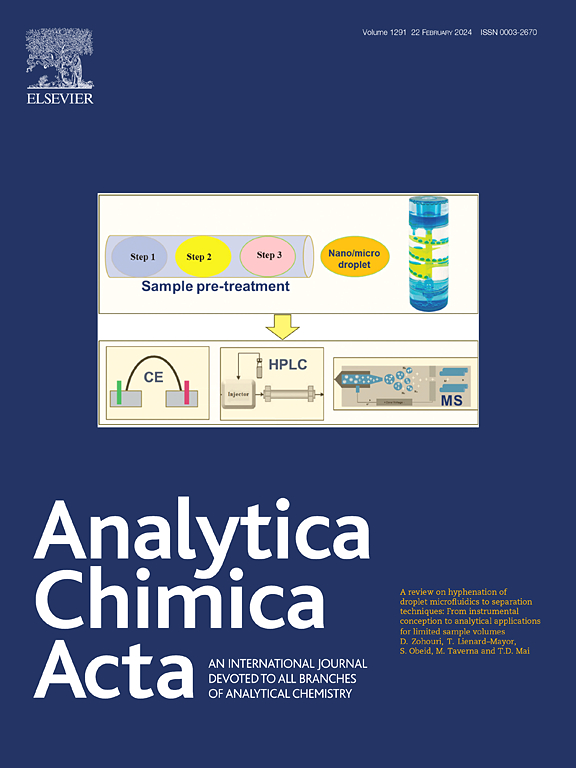Unsupervised classification of iron ores based on elemental and isotopic signatures from atomic and molecular emissions of laser-induced plasma
IF 5.7
2区 化学
Q1 CHEMISTRY, ANALYTICAL
引用次数: 0
Abstract
Background
Iron ore classification by grade and origin is critical for quality assurance in steel manufacturing. However, traditional analytical methods can be time-consuming and may not provide comprehensive information for accurate classification.
Results
The present study introduces a novel classification approach utilizing laser-induced breakdown spectroscopy (LIBS) to simultaneously discriminate iron ore grades (fine, lump, and concentrate) and origins (Australia, Brazil, and South Africa), without necessitating prior knowledge of the samples. A key aspect of this approach is to leverage multiple spectral features from laser-induced plasma: (i) atomic lines representing elemental composition, and (ii) molecular bands reflecting isotopic signatures. Based on this comprehensive spectral data, principal component analysis (PCA) was employed to visualize the correlations among the datasets, thereby illustrating how elemental composition and isotopic abundance correlate with grades and origins. Subsequently, the k-means clustering algorithm was utilized as an unsupervised classifier, eliminating the need for previously labeled training data. Consequently, the present approach could achieve an accuracy exceeding 94 % in determining the grade and origin of ores.
Significance
This study successfully established the rapid and versatile classification method for unknown iron ores, offering significant benefits for various industrial applications.

基于激光诱导等离子体原子和分子发射的元素和同位素特征的铁矿石无监督分类
根据品位和产地对铁矿石进行分类是保证钢铁生产质量的关键。然而,传统的分析方法可能耗时,并且可能无法提供准确分类的全面信息。本研究引入了一种新的分类方法,利用激光诱导击破光谱(LIBS)同时区分铁矿石品位(细粒、块状和精矿)和产地(澳大利亚、巴西和南非),而无需事先了解样品。该方法的一个关键方面是利用激光诱导等离子体的多个光谱特征:(i)代表元素组成的原子线,(ii)反映同位素特征的分子带。基于这些综合光谱数据,采用主成分分析(PCA)将数据集之间的相关性可视化,从而说明元素组成和同位素丰度与品位和来源之间的相关性。随后,使用k-means聚类算法作为无监督分类器,消除了对先前标记的训练数据的需要。结果表明,该方法测定矿石品位和产地的准确度可达94%以上。本研究成功建立了快速通用的未知铁矿石分类方法,对各种工业应用具有重要意义。
本文章由计算机程序翻译,如有差异,请以英文原文为准。
求助全文
约1分钟内获得全文
求助全文
来源期刊

Analytica Chimica Acta
化学-分析化学
CiteScore
10.40
自引率
6.50%
发文量
1081
审稿时长
38 days
期刊介绍:
Analytica Chimica Acta has an open access mirror journal Analytica Chimica Acta: X, sharing the same aims and scope, editorial team, submission system and rigorous peer review.
Analytica Chimica Acta provides a forum for the rapid publication of original research, and critical, comprehensive reviews dealing with all aspects of fundamental and applied modern analytical chemistry. The journal welcomes the submission of research papers which report studies concerning the development of new and significant analytical methodologies. In determining the suitability of submitted articles for publication, particular scrutiny will be placed on the degree of novelty and impact of the research and the extent to which it adds to the existing body of knowledge in analytical chemistry.
 求助内容:
求助内容: 应助结果提醒方式:
应助结果提醒方式:


